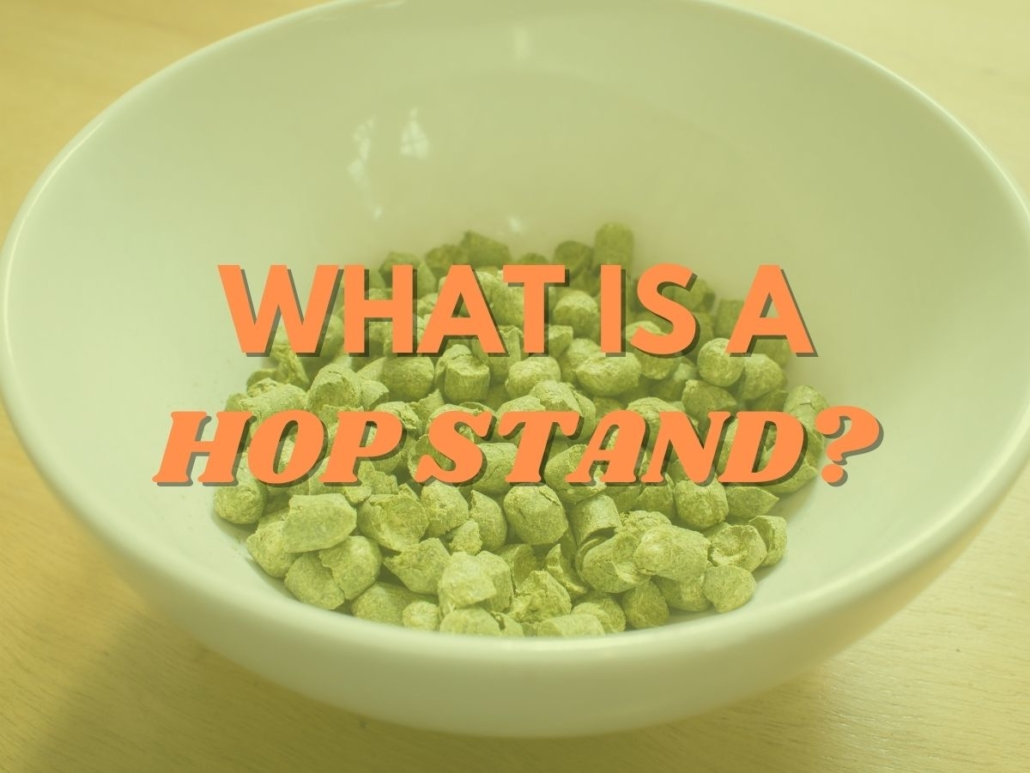What Is A Hop Stand? – Making The Most Of Aroma Hops

There are all sorts of ways of using hops to add, bitterness, flavour, and aroma. A hop stand is used by brewers trying to maximise hop aroma and capture those volatile compounds in hops that might be driven off when added earlier in the brewing process.
Table of Contents
What Is A Hop Stand?
A hop stand is when hops are added after the boil and allowed to steep in the wort for an extended period just as we begin cooling. A common time to add these hops is during the whirlpool.
A hop stand might also be referred to as “whirlpool hops”
You might think of a hop stand as a bridging addition between late boil hops and dry hops.
The goal is to capture the more delicate aroma of the hop varieties you are using without driving them off with prolonged contact in boiling wort. Large additions of hops in a hop stand are primarily used for hop-forward beers where the hop aroma is meant to shine and dominate.
What Makes A Hop Stand Different To Late Addition Hops?
You may be thinking that a hop stand is no different from just adding a load of hops at flameout when the boil comes to an end. There are definite similarities and both methods will result in a big punch of hop aroma.
A hop stand, however, is a little more nuanced. The temperature of the wort is taken into account before adding the hops. By reducing the temperature from boiling to around 75-80C before adding your hops there will not only be a difference between the aroma but also the bitterness extracted from the hops.
At a lower temperature, the hop utilisation will be lower meaning fewer alpha acids are isomerised. In essence, you are extracting more aroma and less bitterness from the hops at lower temperatures.
What Temperature To Perform A Hop Stand?
There are some arguments about how much difference you are really seeing from a hop stand at 100°C compared to something like 75°C. At a homebrew scale, your wort is going to cool quicker than at a commercial level so even adding hops immediately after the boil the wort will soon drop 5 – 10 degrees.
How many of the volatile aroma compounds are driven off is probably hard to discern by taste alone.
What you have to consider is when using large amounts of late hops which might have high levels of alpha acids a reduction of temperature from 100°C to 80°C has means a reduction in hop utilisation of around 80%.
Adding the hops at 80°C will result in less bitterness being extracted from the hops.
I always cool my wort down to 75°C – 80°C before adding my hop stand hops and then allow them to steep for around 10 minutes before continuing to cool the wort.
How Long To Whirlpool Hops For?
The primary goal of a hop stand is to capture the aroma of the hops you are using. To do this we want to limit the exposure of the hops in the wort at high temperatures otherwise you will also be adding bitterness.
I usually steep hops for around 10 minutes but they are still in the wort until it is completely chilled.
I would limit a hop stand to 30 minutes maximum to avoid adding too much bitterness to your beer.
Hop Utilisation During A Hop Stand
There will be some bitterness added when you add large amounts of hops during a hop stand. In fact, some styles of beer such as NEIPA that is very hop-forward with lower bitterness forgo the boil additions, and opt for adding the majority of hops late in the boil and during the hop stand.
It is quite difficult to calculate the IBUs from hop stand additions because everything is quite fluid. The wort temperature is dropping and the utilisation of the hops is not constant, you may be adding a variety of hops with different alpha acids.
Brewing software such as Beersmith or Brewers Friend has features that will give you an approximate figure by which to design your recipe.




Leave a Reply
Want to join the discussion?Feel free to contribute!